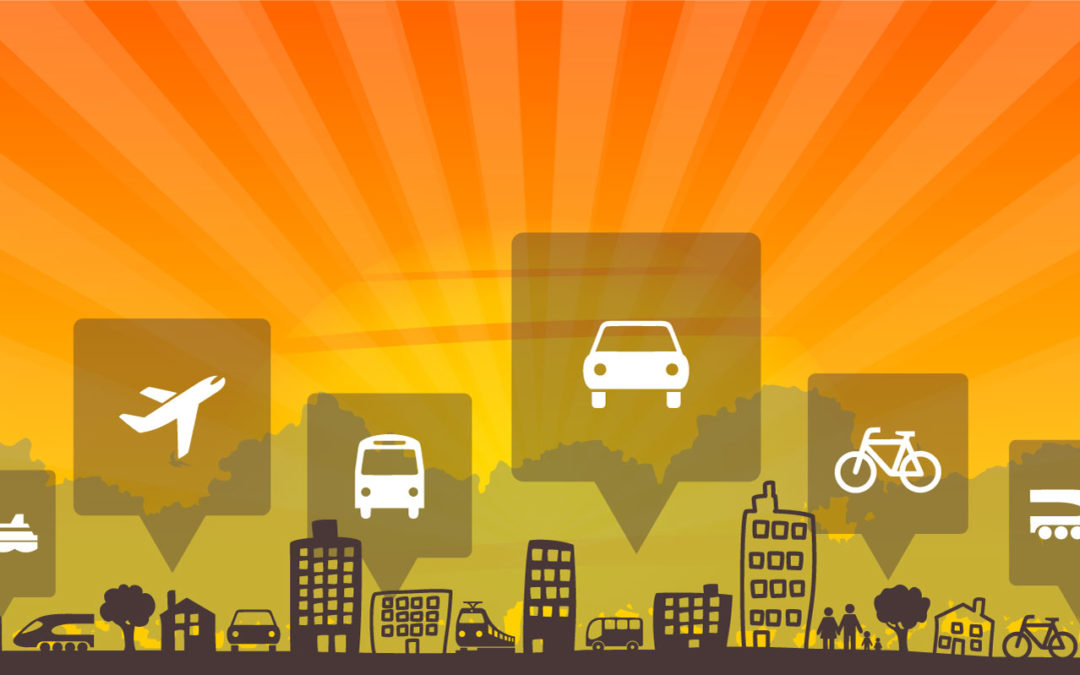In the very first edition of the RENEW Wisconsin Electric Vehicles Blog, I shared my transportation story. That was over a year ago, and now we are approaching a new decade, which will be sure to bring just as much change as the last. Here’s a quick rundown of what I see as the biggest transportation changes over the past 10 years, what’s coming next, and how I plan to clean up my own transportation use in 2020.
10 years of transportation
In 2010, 3 days after my 16th birthday I got my driver’s license, kickstarting my experience with personal transportation.
In 2015, I purchased a red (Go Badgers!) 2010 Ford Escape. I didn’t even think about buying an electric car. Sometimes, I opted to drive my car because it was warm and easy, despite having the option to reduce my emissions by walking, taking the bus, driving my moped, or biking.
Then, in July of 2018, I started working at RENEW. I was immersed in clean energy – and quickly realized that my transportation choices didn’t align with my values.
I spent a year learning as much as I could, evaluating my lifestyle, and crunching the numbers on an EV purchase. I bought a Tesla Model 3 and moved to an apartment with solar on the roof. My husband and I are an all-electric, one car household. I call a rideshare when I need it – and in Madison, I can call an all-electric rideshare with Green Cab.
This is not the transportation future I imagined when I started my transportation story in 2010. I have more options, and produce fewer emissions, than I could have imagined 10 years ago. Madison is a walkable city that has an all-electric cab company, BCycle electric bikeshares, beautiful bike paths, and an extensive bus system that is being renovated and electrified. I can (and do!) take advantage of these options to live my clean energy values more fully.
A clean energy resolution
As I reflected on my personal transportation choices this decade, I decided to make Clean Energy Resolutions for 2020:
- Buy carbon offsets for my air travel.
- Try not to rideshare alone. I will bus when possible and call a Green Cab when I need to, reducing my solo rideshare trips (it’s not really “sharing” when I’m the only one in the car that needs to go there).
How has your personal transportation evolved over the decade? What would your Clean Energy Resolutions be?
Here are a few options to dip your toe into a clean energy transition this year:
- Pledge to take the bus once a week in January
- Instead of a “swear jar” have a “lights jar” at home – anyone caught leaving a light on when they’re not in the room owes the jar $1
- Take part in National Bike to Work Day this May, bonus points if you get coworkers involved
- Look into your utility’s green power program, or other ways to offset your home’s electricity use, like solar
- Test drive an electric car (I bet you’ll like it!)
- Become a RENEW Sustaining Member
- Get a solar site assessment – at home or your work – to see if solar is right for you. See our list of trusted installers here
What will next decade hold?
This decade saw a lot of change in the way people get around. Rideshares like Uber and Lyft became common, electric scooters took over sidewalks nationwide, and electric vehicle sales tipped over 1 million in the U.S.
I expect that next decade it will be even easier to get around with enhanced micromobility options, cleaner buses with more bus routes, and more electric vehicle models than ever. These transitions are happening nationwide and Wisconsin is no exception. In addition to Madison, La Crosse, Milwaukee, and Racine all have electric buses ordered. Madison is working toward bus rapid transit, which will make commuting faster, cleaner, and more equitable for thousands of Wisconsinites. Micromobility is happening everywhere too – the founder of Bird Rides, one of the big scooter-sharing companies, grew up in Appleton! And, there are bikeshares in cities as small as Wisconsin Rapids and as large as Milwaukee. Together, these options will make it easier to get where you need to go, with fewer emissions.
For passenger vehicles, expect 200 different EV models to be available by 2025, giving us more size, shape, price, and brand options in the electric vehicle market. To add to it, I am really excited to see how the transition to autonomous vehicles will play out, especially as we transition to electric and shared mobility at the same time.
Buckle up, it’ll be a fun ride!

